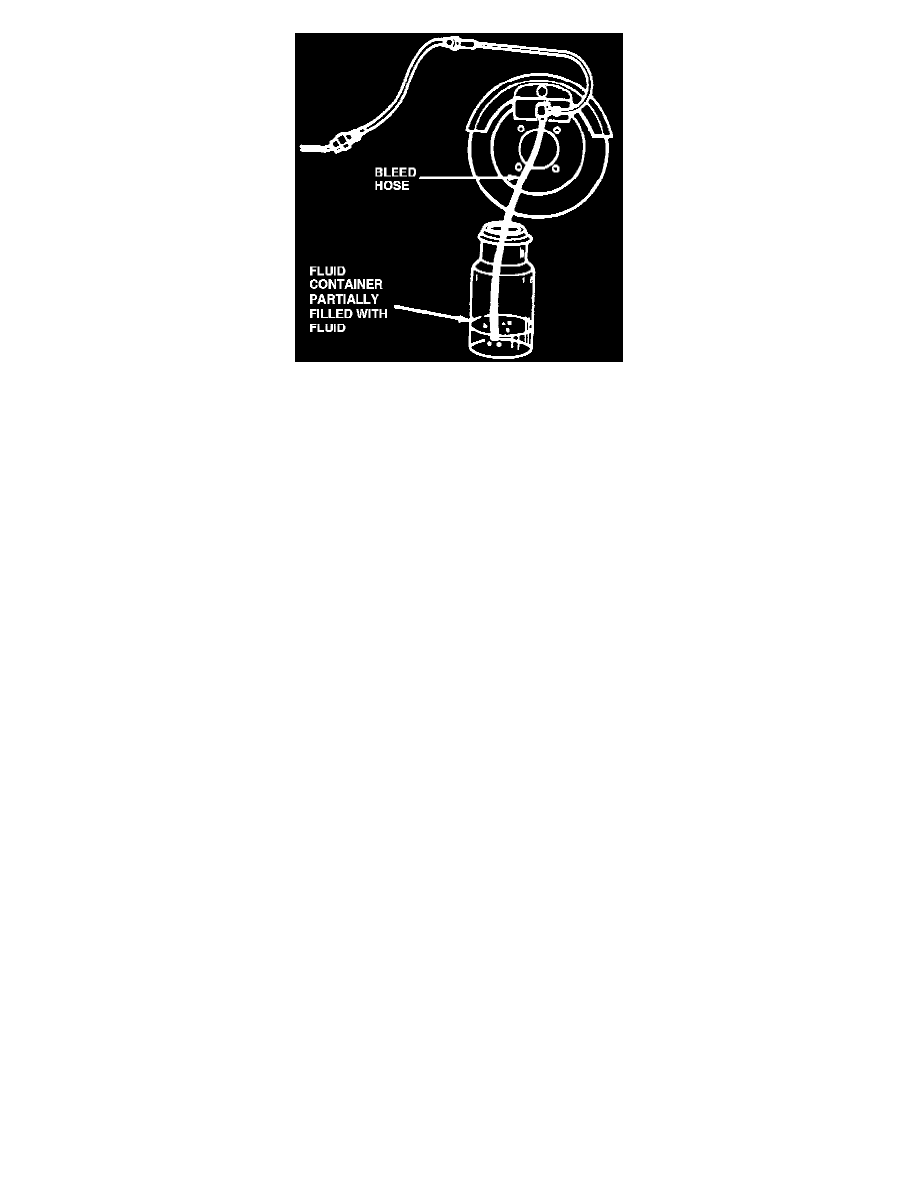2500 4x2 Pickup V8-318 5.2L Magnum (1994)

Fig. 1 Manual Wheel Bleeding
-
Attach one end of bleed hose to bleed screw and insert opposite end in glass container partially filled with brake fluid. Glass container makes it
easier to see air bubbles as they exit the bleed hose.
-
Be sure end of bleed hose is immersed in fluid. Immersing hose end in fluid prevents air from being drawn back into cylinder and brakeline.
9. Bleed master cylinder first. Have helper operate brake pedal while bleeding each master cylinder fluid outlet line.
10. Bleed combination valve next and rear brake antilock valve afterward. Bleed valves at brakeline fittings one at a time. Surround line fittings with
shop towels to catch fluid bled from valve.
11. Bleed first wheel brake unit as follows. Start at left rear wheel:
-
Open caliper or wheel cylinder bleed fitting 1/2 to 3/4 turn.
-
Have helper press and hold brake pedal to floor.
-
Tighten bleed fitting and have helper release brake pedal.
-
Continue bleeding operation until fluid entering bleed container is clear and free of bubbles.
12. Repeat bleeding procedure at remaining wheel brake units. Discard fluid bled into glass container. It should not be reused.
13. Check and top off master cylinder reservoir fluid level.
14. Verify proper brake operation before moving vehicle.
Pressure Bleeding
RWAL PRESSURE BRAKE BLEEDING PROCEDURE
The front brake metering valve (in the combination valve) must be held open when using pressure bleeding equipment. This is necessary because the
20 psi exerted by pressure equipment exceeds the valve hold off point causing it to close. The metering valve is in the forward end of the combination
valve. The valve stem is accessible after removing the rubber protector cap that covers the stem. The stem must be either pressed inward or held
outward slightly in order to bleed the front brakes. Use clip style special tool No. C-4121, or equivalent, to hold stem in or out. Do not use pliers or
similar tools as stem and valve will be damaged.
1. Fill bleeder tank, if necessary.
2. Purge air from bleeder tank and lines before proceeding.
3. Clean master cylinder reservoir and filler caps thoroughly.
